
8 minute read
Life on the move
Life on the move Stepping towards an active future
‘I’ll do it tomorrow!’ Sound familiar? To a greater or lesser extent, we are all guilty of saying this, and tomorrow never comes. We can, however, conquer our weaker self, that saboteur of motivation – and taking the first steps towards an active future is really easy! Furthermore, all it takes to keep going is a little bit of determination. Jessica Holzmann, the multitalented athlete, sports scientist and exercise therapist at Park Igls, has put together a few simple tips to help you plan effectively, maintain motivation levels and get into the zone. Her secret weapon for negotiating the exercise labyrinth? Swimming!
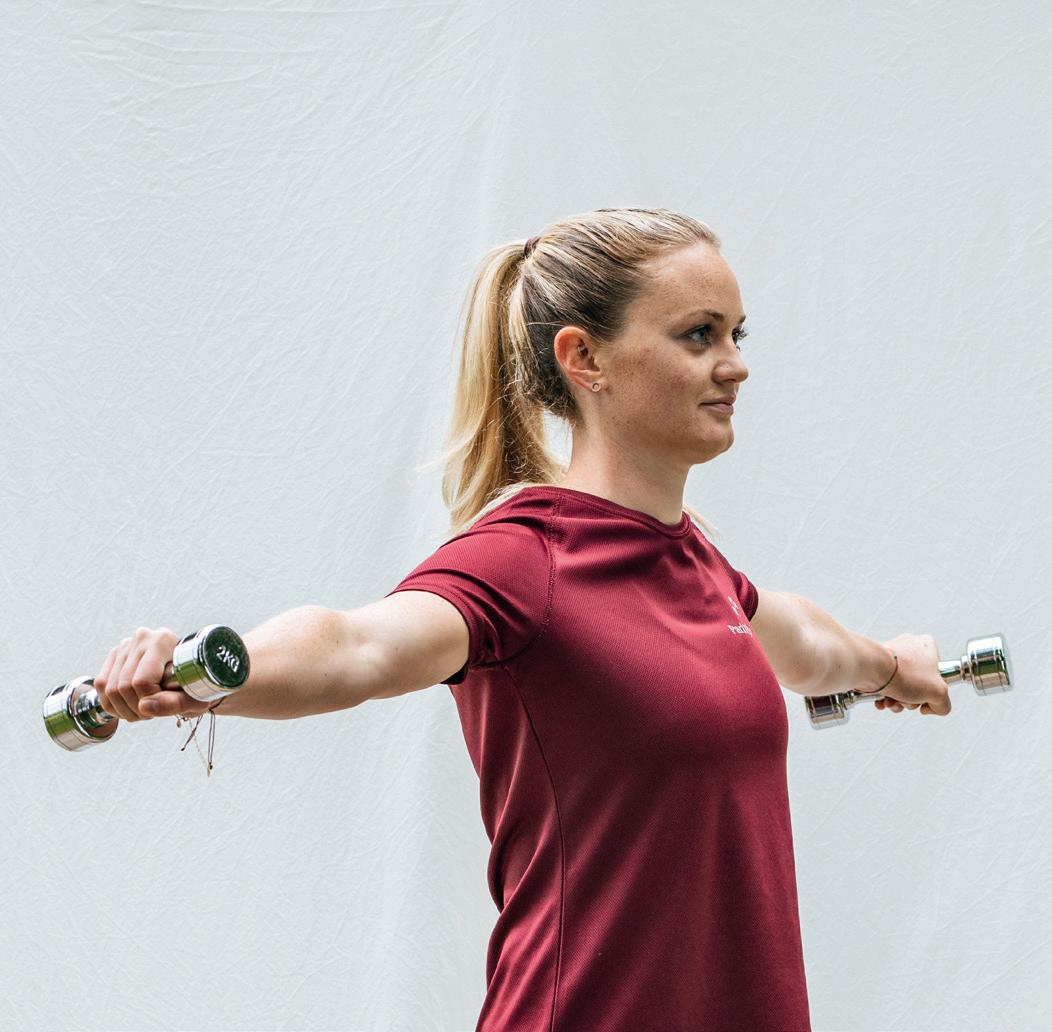
Get a plan! The perfect training plan
INDUCTION AND INITIAL WORKOUT The best way to devise your own training plan is with a personal trainer. As Holzmann explains: ‘Here at Park Igls, we benefit from the medical data our guests provide, so we know about any illnesses or issues in advance. This enables us to rule out inappropriate types of exercise, or to focus on particular areas, depending on what’s best for the individual. The first workout helps us determine other important parameters, including objectives, motivation and personal preferences.’
Based on this data, a range of exercises is selected for the guest to also enjoy at home. ‘Some people love using equipment, while others prefer exercising on a mat in their living room,’ Holzmann says. ‘We try to incorporate a bit of everything into their workout, as long as the guest has access to the equipment at home.’
Fit and healthy people, with no underlying medical conditions or restrictions due to injury, can basically do everything. The focus for people with a medical condition or injury is generally on their problem area. ‘Nevertheless, we also make sure that all the muscle groups are exercised during a workout.’ This is because all the muscle groups interact – after all, when we aim for weight loss and a flat stomach, Did you know?
One of the advantages of weight training is that muscle groups can more easily be trained in isolation. In addition, there is little risk of injury if executed correctly. Functional fitness exercises train your joints and muscles to work together, preparing them for daily tasks and promoting body-awareness. Combining workouts with gym equipment and functional training is therefore highly recommended.
abdominal exercises alone won’t lead to the desired effect. Strengthening the large muscle groups boosts the basal metabolic rate and ensures that the pounds drop more easily!
‘After a month or two, it’s time to change your training plan,’ Holzmann emphasises. Like us, muscles need to be constantly stimulated anew in order to grow. ‘Feel free to call us, and we’ll change your plan so you can start on the next phase.’
FOCUS ON BUILDING MUSCLE Holzmann explains why personal training at Park Igls has a focus on building strength: ‘This is in part determined by the Mayr treatment programme, which usually involves weight loss and can therefore temporarily lead to a slight reduction in muscle mass. To counteract this, we work on building your muscles. Unlike conventional Mayr nutrition, the Modern Mayr Diet with protein supplements allows and encourages exercise. In addition, strength training boosts the metabolism and calorie consumption and a good muscle structure relieves the support musculoskeletal system. ‘Strength training is combined with stretching exercises and endurance training to create an ideal basis for an active future.
Stick with it! Fun is the best motivation
Not only does an active future sound good, it is good – if only your inner couch potato wasn’t in the way … Your weaker self can be very persuasive, but there are ways and means to help you overcome it.
Motivation can be intrinsic (triggered by our own needs and interests) and extrinsic (determined by external factors such as reward or duress). While the former is worth striving for, the latter soon wanes because there comes a point when it has served its purpose.
‘When a guest approaches us for advice, they have taken their first motivated step,’ states Holzmann. ‘They are out of the starting blocks. Now it’s time to give them the instruments to keep going into the future.’ The fun factor is the most important. ‘A certain level of enjoyment is needed to keep at it.’
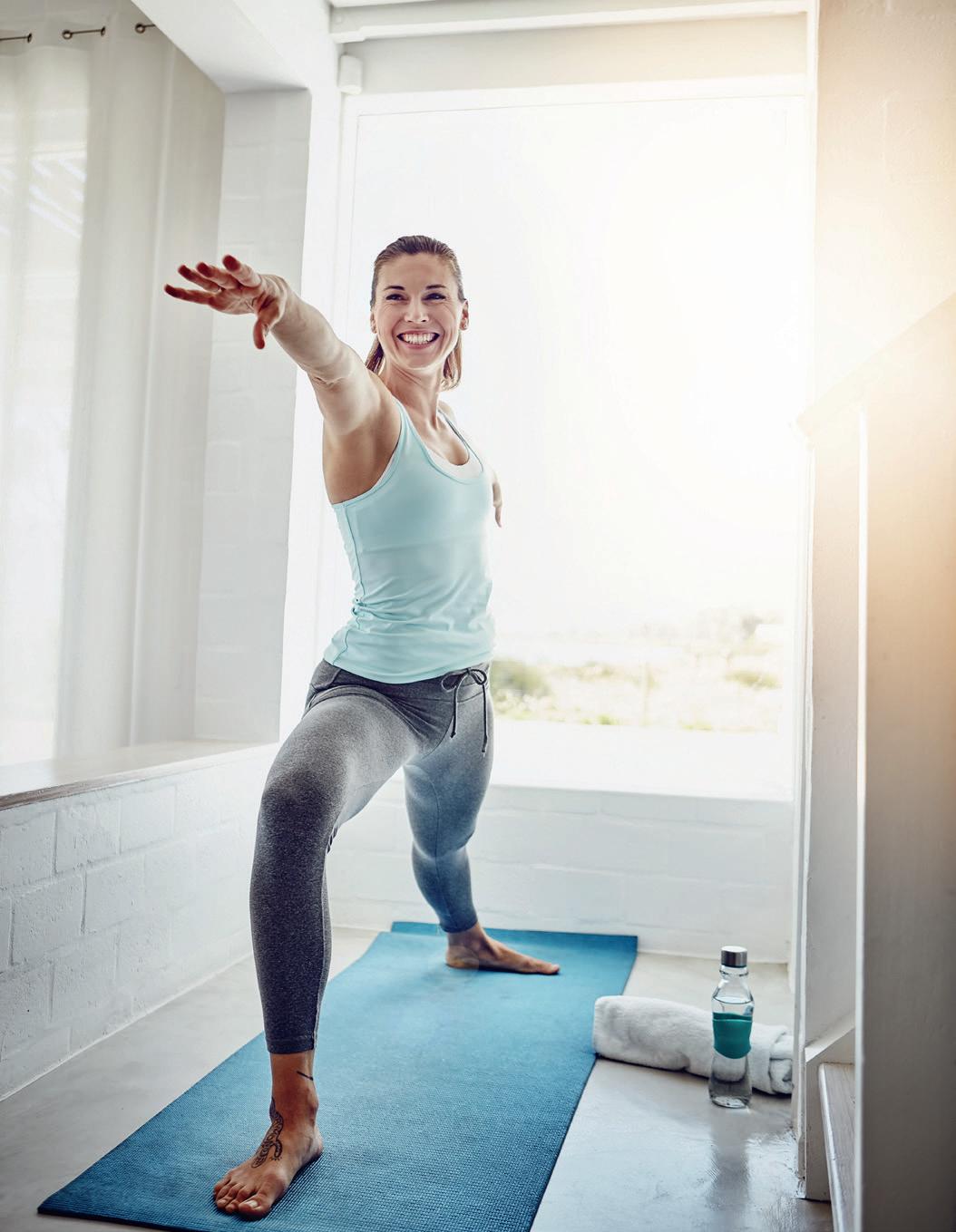
Choose an activity that you at least have an interest in.
Choose one that is easy to integrate into your everyday life – think of distance and cost.
Decide whether you prefer to work out in a class or on your own. A training partner helps bolster commitment: arranging to meet a friend or group for an exercise session makes it harder to cancel. And if that doesn’t help, book yourself a session with a trainer!
Schedule your training sessions in a calendar! This gives your appointment with health the status it deserves.
Create a to-do list: every tick represents another achievement!
Don’t be discouraged by setbacks – keep going! The journey is the destination, and any exercise is better than no exercise.
Give that couch potato a nudge, and make time for the next step en route to your active future.
In the zone
Keep going and enjoy the buzz
A runner’s high is an incredible feeling of pure elation: that happy place where everything seems effortless and movement flows. What is happening to the body during this euphoric time?
‘A runner’s high requires the kind of rhythmic movement that comes with running, so it can also happen when you’re cycling or swimming,’ Holzmann tells us. ‘The difference between this and being in the zone is that a runner’s high only occurs at very high intensity, when you’re close to reaching your limits! But all kinds of exercise can get you into the zone; even quite ordinary activities can trigger a flow state. You don’t need to reach your limits for the zone, it’s more about becoming one with the movement, thinking of nothing other than the task in hand. Then, just a small amount of effort is enough for everything to flow in harmony. It’s important to stay focused and not to set the physical challenge too high or too low.’
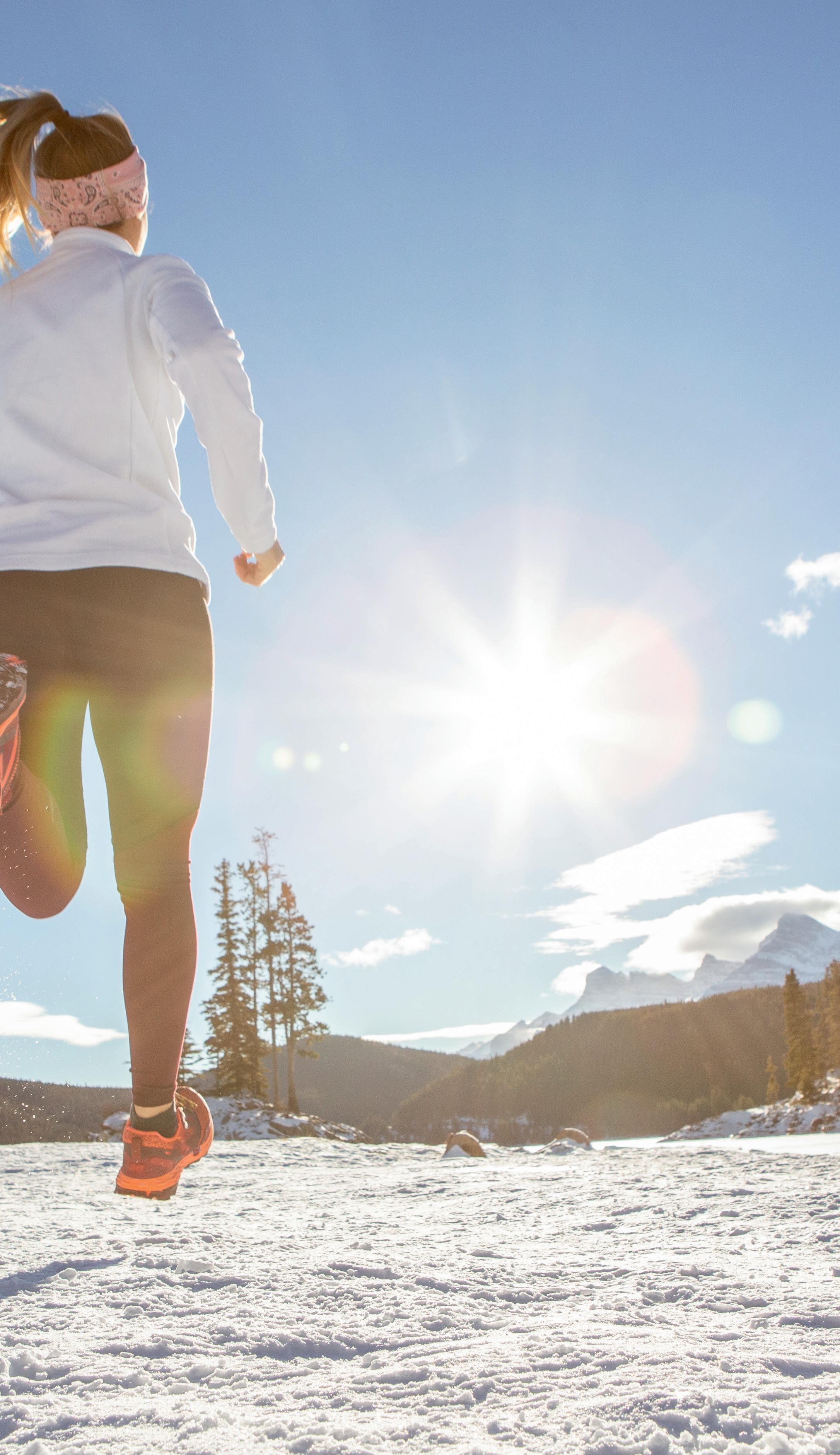
Although getting into the zone requires less hard exercise and endurance than achieving a runner’s high, it does necessitate experience and mental strength. ‘Especially when you first take up a new kind of exercise or sport, you rarely switch off because you are still having to concentrate on getting things right. It takes time and practice to hit the zone, but when you do, you’ll understand that the motivation needed to keep going comes from within!’
Sensational swimming
The exercise all-rounder
Most people can learn to swim; add a few nifty techniques, and you’re off!
Jessica Holzmann swears by swimming, and shares some little-known and occasionally astonishing facts about her favourite sport!
BRILLIANT FOR CROSS-TRAINING Whatever your main sport is, especially if you are a cyclist or power athlete, it’s always worth adding cross-training to your schedule. The perfect match: swimming and strength training!
ACTIVE RELAXATION Swimming is ideal for limbering down after intense, strength-centred workouts. It also offers a great way to relax after tense situations.

THE PERFECT CARDIO WORKOUT As soon as you immerse yourself in the water, the cold causes your heart rate to slow down. As the water temperature is constantly below the body’s temperature, the heart rate can be kept at a lower rate even when swimming at high intensity.
SUPERB FOR STRENGTH TRAINING The water’s resistance is comparable to the weights used in the gym. Swimming therefore provides a strength workout for just about every muscle group, especially the chest, shoulders and upper body muscles. IDEAL FOR IMPROVING COORDINATION Swimming teaches us to coordinate multiple movements from multiple body parts at the same time, which is good for the body and great for the brain!
INCREASES FLEXIBILITY The range of motion involved in swimming lengthens the muscles in a way that can make your joints more flexible and help recovery.
INJURIES ARE RARE Because the water supports your body weight, swimming is the only sport which is completely non weight-bearing. It is therefore gentle on the joints and unlikely to result in injury.
GOOD FOR YOUR LUNGS Swimming helps people with reduced lung capacity. As it is a cardiovascular activity, it trains the body to better transport and absorb oxygen. The specific way we breathe when swimming (inhaling above the water and exhaling under it) also trains the lungs.
CIRCULATION BOOSTER Since the water’s temperature is always below body temperature, it stimulates the circulation which is also great for your blood pressure!
CALORIE BURNER The cardio and strength workout you get from swimming burns plenty of calories, but the water’s lower temperature adds to this effect.
Getting started
Jessica Holzmann recommends that you start training with an instructor, because learning all the techniques, including how to breathe properly, will make things so much more fun. Especially when you start, progress is fast, and this helps you stick with it. An instructor keeps you on your toes by setting new challenges, and makes sure you train at the right intensity for you. Once you have mastered the basic swimming and breathing techniques, skill comes with practice. And then, when you finally glide through the water, training will be even more enjoyable and is rewarded with strength, endurance, improved lung capacity and a wonderfully toned body.
SWIMMING IS GOOD FOR YOU: • Relieves joint problems. • Reduces risk of falling. • Helps with weight issues. • Decreases injury rehab time. • Brilliant for back problems: freestyle and backstroke strengthen the back muscles – as does breaststroke with the right technique. • Highly recommended for most people! SWIMMING AT PARK IGLS • Jessica Holzmann is a nationally certified swimming instructor. • Swimming courses with a personal instructor are available on request.
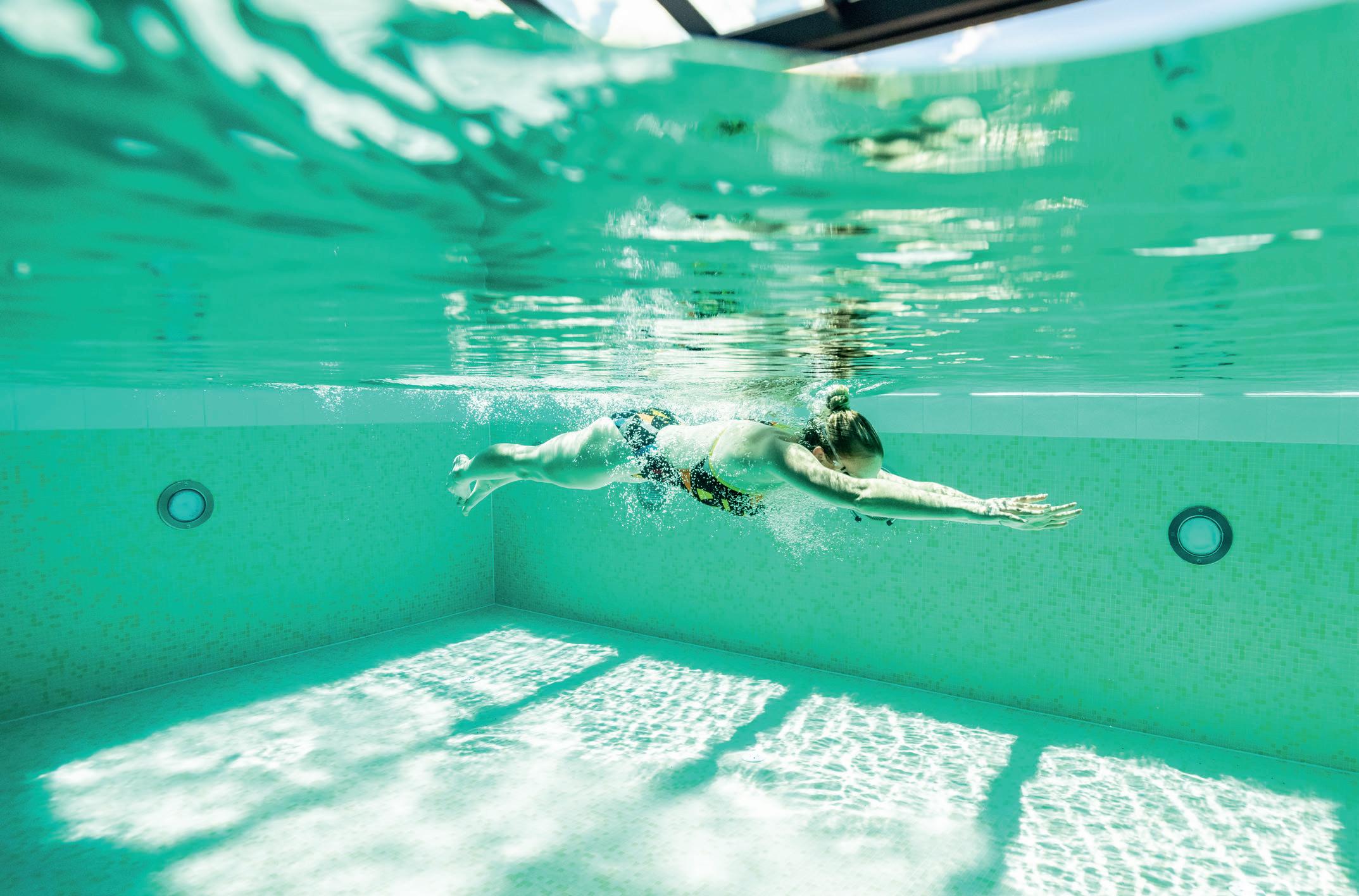
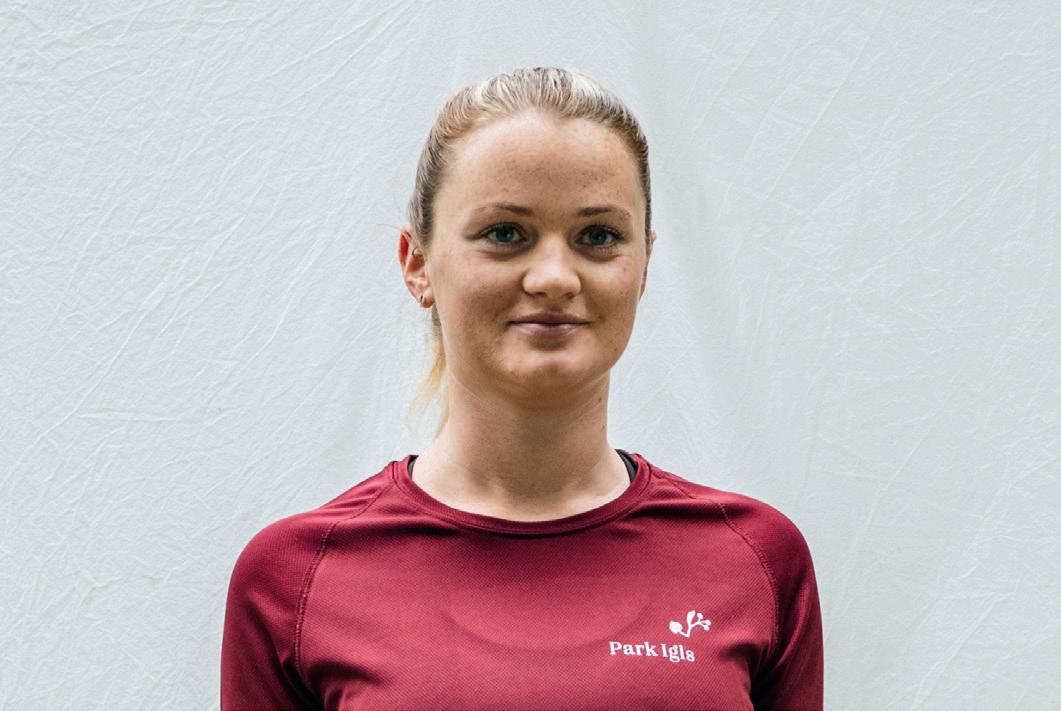
Jessica Holzmann MSc Sports scientist









